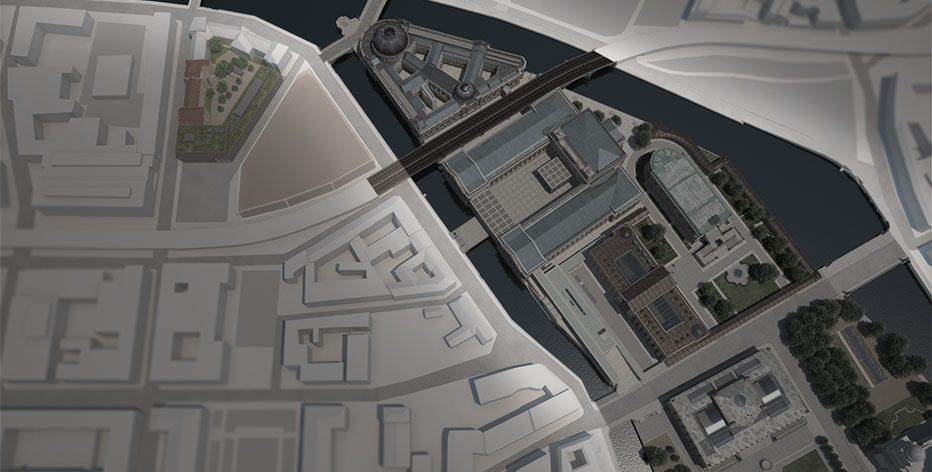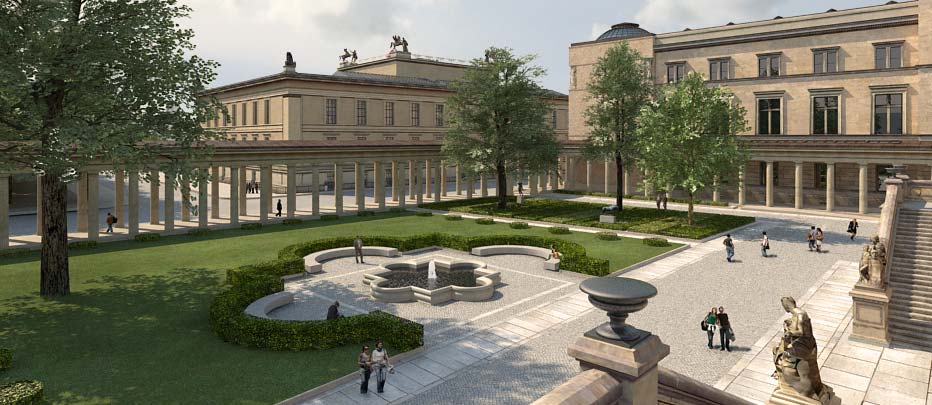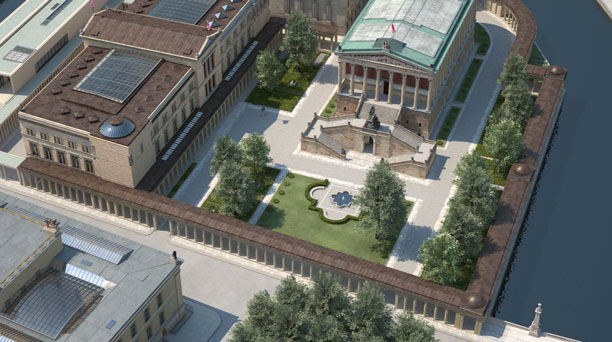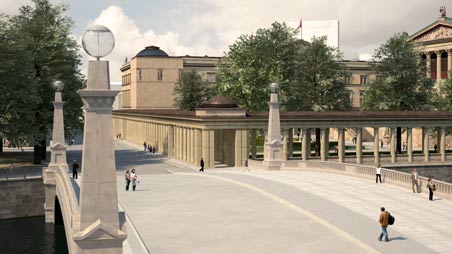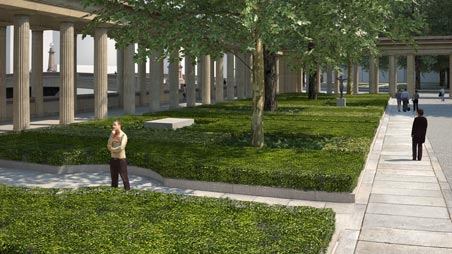Arcadia in Berlin
When the Colonnade Courtyard reopened in 2010, an Arcadian place emerged on the Museum Island. The courtyard, which is planted with tall sycamores and smaller greenery, is an atmospheric asset to the outstanding architecture of the museums surrounding it.
The Colonnade Courtyard was originally built in several phases together with the Neues Museum and the Alte Nationalgalerie. It is distinguished from the urban space by the colonnaded hallway that encloses it. At the same time, it establishes links to the buildings on the island. Featuring permanently installed historical sculptures and changing exhibits of modern sculpture, the Colonnade Courtyard is an enchanted place in the heart of Berlin.
The colonnades were restored by the office of Architekten Petersen. When the courtyard and its greenery were newly designed by Levin Monsigny, the then existing differences in altitude were leveled so that the Colonnade Courtyard is now barrier-free. The special illumination of the courtyard was awarded the German Prize for Lighting Design in 2011.
